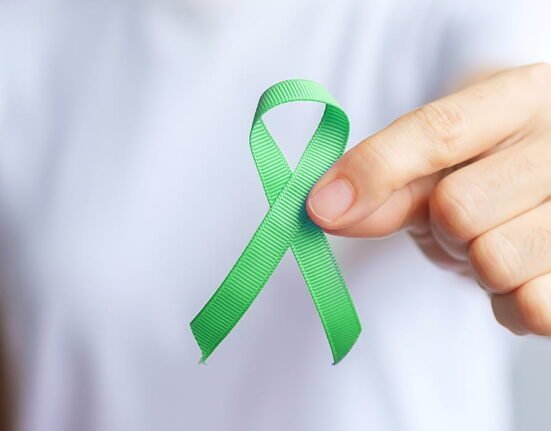Anger can seem like the easiest, loudest reaction to a problem; it’s just the surface layer hiding the more sensitive emotions underneath. Understanding anger as a secondary emotion, a response to primary emotions such as hurt, fear, or sadness, can change the way we approach disagreements, build connections, and foster emotional health. This knowledge isn’t purely theoretical, though it’s a groundbreaking practical tool for anyone who wants to understand and manage their emotions with greater intention.
Read More: Why Are We So Angry? Interesting Reasons for Anger
What is the Difference Between Primary and Secondary Emotions?
These look like primary emotions, which are the raw, primal, knee-jerk emotional responses we have to things that happen. Consider the pain of bereavement or the pleasure of an accomplishment. These emotional experiences are immediate reactions, culturally intermingled to be sure, but deeply rooted in human biology, with discernible physiological markers such as crying or laughing[1][2].
Secondary emotions are what happen when we take those primary feelings and start running them through our mental filters of thoughts, beliefs, and past experiences. Anger is a classic example of this, coming in not as the initial feeling but as a protection over softer feelings such as pain or fear[1][2][3]. Imagine a situation in which you are routinely snubbed by a group of friends.
The short-term pain may be social disconnection or exclusion go-to affect. If simply admitting that pain would mean feeling too exposed, or if you feel that they’re doing things just to purposefully hurt you, then anger rises up out of that as a self-defence mechanism. This transformation occurs in part because anger is more empowering, hiding the powerlessness underneath[1][4].
The Anger Iceberg: What’s Under the Surface
Therapists and counsellors frequently utilise the anger iceberg metaphor as a tool to describe this idea. Anger is the public face; underneath, perhaps buried way beneath, are the core emotions sadness, fear, shame, or frustration[2][3]. Perhaps a partner is hot and cold with you, so you start to act out in rage, but what’s actually happening is that an old hurt of abandonment and/or loss of connection is triggering you.
Anger turns into a wall that’s easier to display than the tender vulnerability of saying you feel abandoned[5]. Common triggers for anger as a secondary emotion, based on the research of Drs. When facing betrayals, disappointed expectations, or previous trauma that elicit primal hurt or fear, we may express that hurt or fear as anger because it’s easier to protect ourselves with rage than acknowledge those more profound realities[2][3]. The first step in anger management is understanding what triggers your anger, which is important because it goes beyond the immediate harmful outburst and helps identify the cause. It’s not as simple as anger being a secondary emotion.
Read More: Emotions: Play of Environment and Biology
When Anger Isn’t Secondary: Righteous Rage and Boundary Violations
Nope, not so fast. Anger may be a secondary emotion, a direct reaction to an injustice that has occurred or a boundary that is crossed. If, in the public sphere, an acquaintance gives you a rude, sexist comment, then the anger you feel at that moment is actually a signal to you that the objective of respect has been violated. In these moments, anger is not covering up for sadness. It’s what sadness looks like when you are directly and obviously threatened[1]. Even primary anger can intensify or linger when stoked by deeper feelings or attributions, like reading intent into the comment that is bad faith[4]. We need people like you, our champions, to tell stories about how the National Park Service plays an important and exciting role in protecting our world.
Digging Beneath the Surface to Heal and Connect
Seeing anger as a secondary emotion is the first step to replacing destructive emotional reactions with healthier responses that are rooted in deeper feelings. When anger takes over, it suppresses the basic feelings below it and makes it hard to channel rage into something productive. By sharpening your focus on what’s under the anger, hurt, fear, or disappointment, you can deal with what’s really going on instead of just the symptom. This process encourages healthier conflict management, relationship building, and mental well-being[1][5].
So, rather than jump down your partner’s throat for showing up late, you can take a step back and acknowledge that the real fear here is that they don’t care about you. Being able to convey that vulnerability, “I feel like I don’t matter if you’re always late”, will allow them to have a much more productive discussion than a tirade borne of anger. This change takes some getting used to, but is well worth the effort both in terms of richer interactions and as a means of developing ourselves.
Read More: Rage Rooms: Providing Anger Relief or Perpetuating Violence?
The Science Behind Anger and Emotion Regulation
Evidence backs up the connection between anger and difficulty with emotion regulation. A recent meta-analysis on anger regulation found that anger is reliably linked with maladaptive strategies such as avoidance, rumination, and suppression, which lengthen and worsen the emotion. Adaptive strategies like acceptance and cognitive reappraisal, reframing a situation to reduce its emotional effects, are both negatively correlated with anger, meaning they help reduce it[6]. This implies that the right way to control anger is to learn how to deal with the feelings it hides, not to become better at restraining the anger itself.
Neurobiologically, anger stimulates the amygdala, launching a fight or flight reaction before your logical prefrontal cortex has a chance to respond. This is a rapid second reaction, which is why the anger feels so urgent even when it’s the second emotion. Left unchecked, the continued avoidance and lack of expression of primary emotions can make anger the go-to response, which in turn perpetuates a cycle far more difficult to dismantle without active practice[6][3].
Read More: The 6 Basic Emotions and How They Shape Our Everyday Life
Practical Steps to Work Through Anger
Well, how do you make the most of this new knowledge on a day-to-day basis? Cultivate emotional intelligence as a key first step. When anger is coming up, take a step back first and think about it: What am I truly feeling right now? Is there pain, anxiety, or grief hiding underneath this? Usually, journaling or talking with a trusted friend is all it takes to peel back these layers[1][2].
Second, engage in vulnerability to co-create safe(r) spaces. Using I-statements to express primary emotions (“I feel scared when we fight”) rather than pathological accusations (“You’re always making me mad”) promotes de-escalation and mutual understanding, particularly in intimate relationships[5]. If this seems like an overwhelming first step, try therapy instead. Methods such as Cognitive Behavioural Therapy (CBT) assist in uncovering thought processes that stoke anger, and Dialectical Behaviour Therapy (DBT) builds techniques for emotional regulation and distress tolerance.
Take care of triggers before they happen. If previous trauma or unfulfilled hopes frequently trigger your anger, begin the work of healing those wounds, ideally, with the aid of a therapist to lower the volatility of those emotional triggers. Simple practices such as mindfulness to help keep you in the moment with your emotions can help ensure anger doesn’t become the default response.
Read More: Anger: A Healthy Emotion or a Harmful Reaction?
Anger in Intimate Relationships and Injustice at Scale
In our personal relationships, anger as a secondary emotion usually conceals feelings of disconnection or desire for recognition. An argument about household tasks could actually stem from feeling undervalued. Understanding this reorients hurtful tussles into chances for connection[5]. Outside of interpersonal connections, this idea extends to our jobs or being a parent. An adult’s irritable response to a coworker may be rooted in anxiety about their competence, just like a kid’s meltdown might be hiding a fear of falling short. Maybe that’s because dealing with the real underlying emotion in every situation makes for deeper and longer-lasting solutions[2].
Continuing Forward with an Eye Toward Emotion
Anger does not need to dictate your life or affect your friendships. When you think of anger as a secondary emotion, you’re empowered to dig deeper and get to the root, which is often the hurt, fear, or sadness that fuels the anger. This first section isn’t about anger being wrong, but understanding anger as a signal. Something deeper must be addressed. With practice, you can go from knee-jerk eruptions to measured replies, enhancing resilience and connection along the way.
The process can take time and at times be stressful, whether that’s the support from family and friends or the support from counsellors or medical professionals. The payoff is no less than a life where feelings, even the painful ones, are used as instruments of growth rather than agents of division. So the next time you feel that hot anger rising, stop and say to yourself, “What’s the real issue at play?” The response could both shock you and transform what comes next for you.
FAQs
1. What are primary and secondary emotions?
Emotions such as sadness or joy are our direct, raw reactions, based on biology. Secondary emotions, like anger, show up as reactions to these initial emotions, usually processed through cognition and history.
2. Is anger really a secondary emotion?
Anger typically serves to cover over more underlying, vulnerable feelings such as injury or fear, functioning as a shield against the experience of feeling exposed or helpless.
3. Why is the ‘anger iceberg’ metaphor so useful?
The anger iceberg represents anger as the visible tip, with other emotions such as sadness, shame, or fear underneath the surface, fueling the anger.
4. Can anger serve as a primary emotion at all?
Indeed, anger is sometimes a direct defence response to an injustice done, a violated boundary, like responding to an insult with anger, in which case it’s not really covering up another feeling.
5. How does recognising that anger is a secondary emotion help repair relationships?
Understanding the feelings under duress lets you communicate fear (for instance, “I’m frightened”) rather than retaliate, keeping dialogue open and connection alive.
6. How do I focus on anger while helping kids recognise and deal with the feelings underneath anger in constructive, healthy, safe ways?
Grow emotional intelligence by checking in on what you really feel, learn to express needs with “I-statements,” and try therapy approaches such as CBT or DBT to develop better regulatory skills.
7. Where does anger fit in the context of emotion regulation difficulties?
Anger is associated with maladaptive strategies such as suppression or rumination, whereas adaptive strategies such as acceptance and reappraisal have been shown to lessen its intensity.
References +
Admin, W. (2021, June 7). Understanding the psychology of anger and secondary emotions. Family Psychiatry and Therapy. https://familypsychnj.com/2021/06/understanding-the-psychology-of-anger and-secondary-emotions/
Center, J. C. (2024, July 20). Understanding anger as a secondary emotion — Journeys Counselling Centre. Journeys Counselling Centre. https://journeyscounselingaz.com/blog/understanding-anger-as-a-secondary emotion
Ebarbour. (2025, February 28). Understanding anger as a secondary emotion. New Hope Ranch. https://www.newhoperanch.com/blog/understanding-anger as-a-secondary-emotion/
Ilagan, G., MA, & Ilagan, G., MA. (2025, March 3). Anger as a secondary emotion: What’s important to know. Manhattan Center for Cognitive Behavioral Therapy. https://manhattancbt.com/anger-secondary-emotion/
Pop, G. V., Nechita, D., Miu, A. C., & Szentágotai-Tătar, A. (2025). Anger and emotion regulation strategies: a meta-analysis. Scientific Reports, 15(1). https://doi.org/10.1038/s41598-025-91646-0
Szekely, G. (2025, March 21). Anger as a secondary emotion in relationships. The Couples Center. https://www.thecouplescenter.org/anger-as-a-secondary emotion-in-relationships/













Leave feedback about this